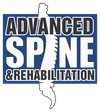Chiropractic and Medical Care: An Effective Combination
Chiropractic And Medical Care: An Effective Combination
We see many people with back pain in our Henderson practice, and Dr. Russell has been able to help many of them get relief with chiropractic care. At the same time, dealing with back pain doesn't necessarily mean having to make a choice between chiropractic care and medical therapy, as many individuals utilize both types of care with great success.
Research Confirms Chiropractic And Medical Care Work Well With Each Other
In a report published by the journal Spine experts1 looked at a group of active-duty military personnel between the ages of 18 and 35 who reported both acute pain and restricted function due to back symptoms. Some of the study participants engaged in treatment via standard medical therapy, while the remainder were given chiropractic adjustments as well as regular medical care, as the authors wanted to see which patients fared better.
The authors determined that the patients who received standard medical care along with chiropractic care scored "significantly better" than the patients who received medical care alone; 73 percent reported positive benefits compared to just 17 percent of the medical care only group who indicated the same amount of improvement. This was true regarding both pain and level of function at the two- and four-week marks.
Thus, incorporating these two forms of treatment can greatly benefit you--the patient--offering advantages when compared to medical care alone. However, while chiropractic and medical approaches can work together, chiropractic offers some unique advantages over medical therapy.
Where Chiropractic Care Pulls Ahead
Although it might seem as if each approach plays a 50-50 role, there is one major benefit that chiropractic care has over medical treatment and that is in patient satisfaction. In fact, one bit of research conducted at UCLA2 that was printed in the American Journal of Public Health reports that, on average, chiropractic patients are generally more satisfied with their recovery than people undergoing medical treatment.
According to the experts, the main aspects that patients favored over medical treatment were "self-care advice and explanation of treatment." This isn't unexpected, as chiropractors typically spend much more time consulting with their patients as to how they can better their health on their own, as well as explaining more thoroughly what to expect from chiropractic care.
Chiropractic Is A Natural Approach To Wellness
Certainly, the methods associated with chiropractic are very different than those available with medical care, but a large amount of the difference is the fact that chiropractic is a natural approach to health and wellness. In contrast to focusing on only relieving the symptoms, chiropractic involves finding the root cause of your pain, which often translates to greater improvement as you are tackling the problem at its source.
In addition, while medication is sometimes helpful for managing certain conditions, many health issues respond well to a natural approach such as chiropractic. This means fewer negative side effects from prescriptions and lasting results.
You don't have to struggle with back pain or other health issues. Give our Henderson office a call today at (702) 990-2225. We'll do our best to help you get and continue to be free from back pain.
References
- Goertz CM, Long CR, Hondras MA, Petri R, Delgado R, Lawrence DJ, Owens EF, Meeker WC. Adding chiropractic manipulative therapy to standard medical care for patients with acute low back pain: results of a pragmatic randomized comparative effectiveness study. Spine 2013;38(8):627-634.
- Hertzman-Miller RP1, Morgenstern H, Hurwitz EL, Yu F, Adams AH, Harber P, Kominski GF. Comparing the satisfaction of low back pain patients randomized to receive medical or chiropractic care: results from the UCLA low-back pain study. American Journal of Public Health 2002;92(10):1628-1633.
